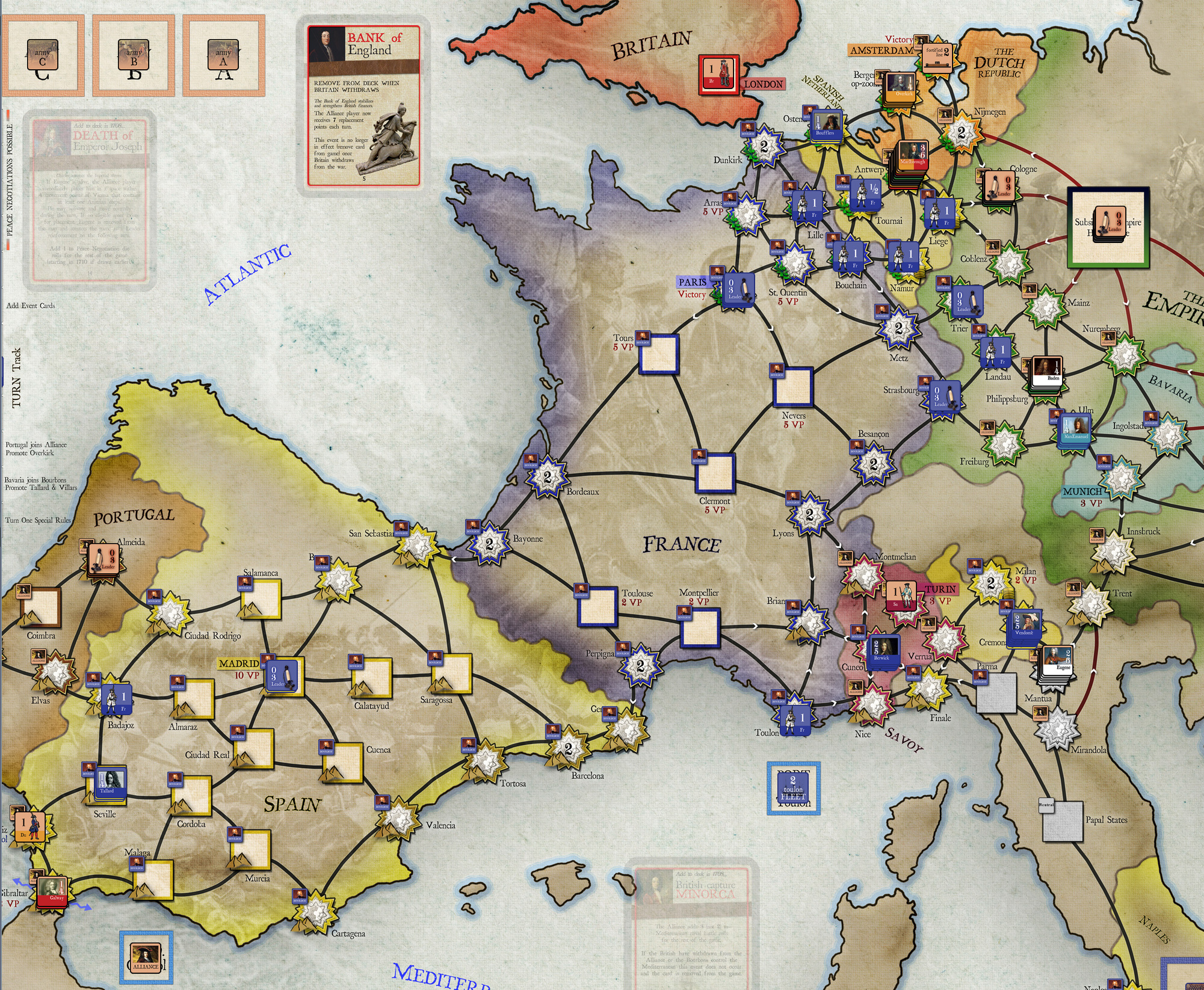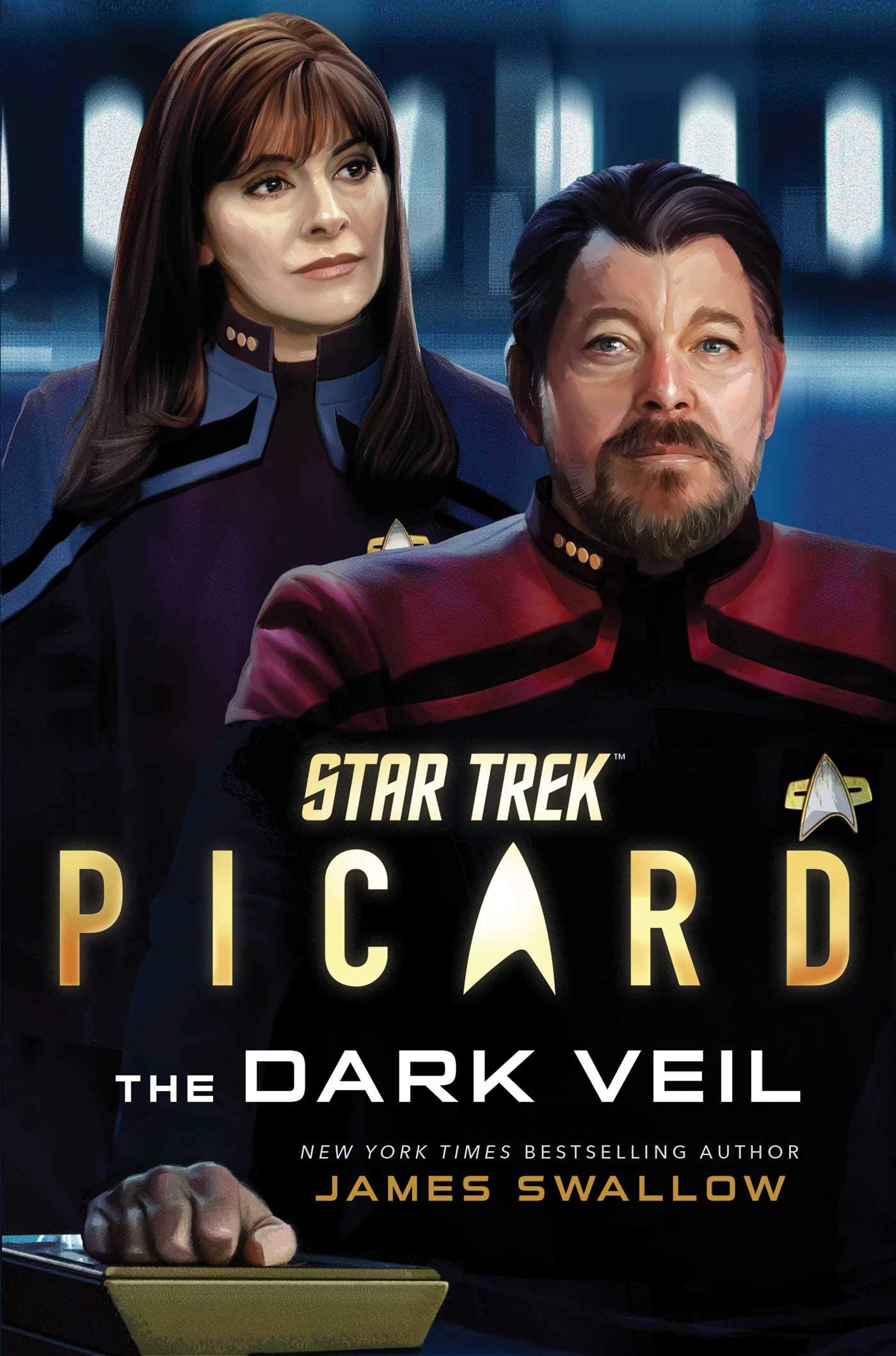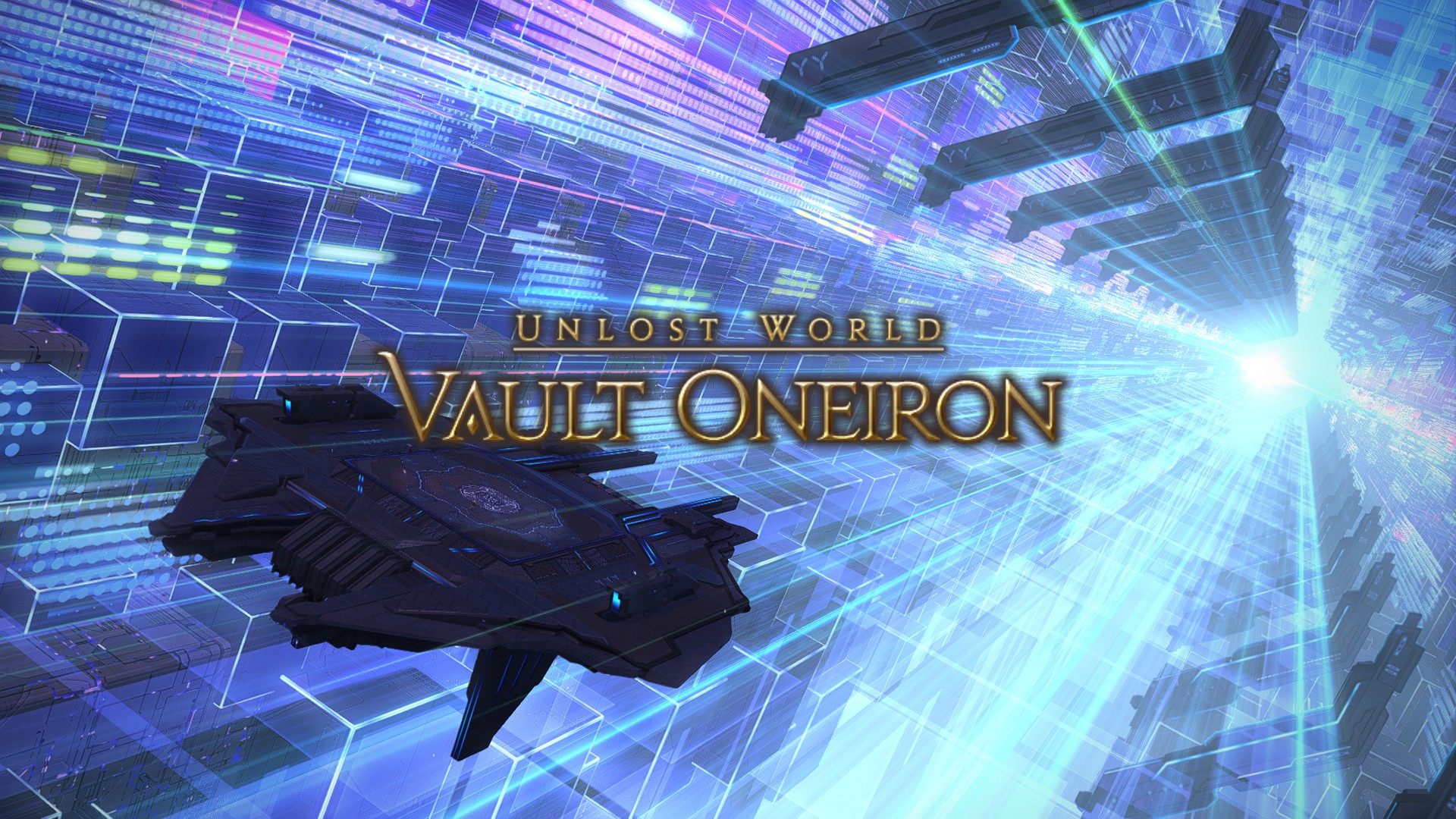After a round of SFB, Mark and I went back to Compass Games’ No Peace Without Spain series for our Sunday games; in fact, we tried out the original game. It was our first time with this particular one, but we’ve played A Pragmatic War, and we went with the full game, which isn’t really much different than the two scenarios. Mark took the Bourbons, while I had the Alliance.
It’s fairly obvious from the VP track that the Alliance is expected to do well, but they do get off to a slow start. Added to that, the first year starts with an abbreviated campaign season, and I won initiative with a tied bid of ‘1’ action cards, which I used to attack Liege. Marlborough’s army had 9 dice to Boufflers’ 6, and I lost on a tie of 3 hits each. Mark replaced losses, I rallied parts of the army and sent reinforcements in. I missed the ‘no two actions with the same troops’ bit (we caught that for the vast bulk of the game), and hit Liege again, doing 4 hits to 3, and I tried a siege in the final round to come up just short. Mark did the two special Bourbon activities in the final round to take Trier and Ulm for free.
Mark took the initiative for 1703, and worked on defending the Spanish Netherlands. My plan was to send a small force to Spain to start distracting him there, while I tried to find a way to advance in the north. To that end, my first round was a sea move to Gibraltar (Cadiz might have been better, but did have a garrison), and sent a small army from the Empire home space to besiege Cologne. Mark maneuvered to cover the areas, and Baden moved to retake Ulm. However, my sieges were going poorly, taking Gibraltar after two 1/0 results, so I was down to a single damaged corps after taking it. The Bavarian army came back to drive me off of Ulm, but we got one hit each for a defensive victory, but I still failed that siege as I got Cologne.
Mark had sent a couple small armies towards Spain, and at the start of 1703 one of them besieged Gibraltar, while I sent a new two-corps army to besiege Cadiz. Marlborough went after Antwerp, and Mark intercepted with Villars, losing the battle 3 hits to 4. Tallard shifted to drive me off of Cadiz instead, and lost that 0 to 1 hit. While he refitted armies, Baden made another attempt on Ulm, but Max Emmanuel intercepted and defeated him, 2 hits each. Tallard defeated my Spanish army (1-0), leaving me a damaged corps to retreat into Cadiz right after I took it. An attempt to relieve Antwerp failed spectacularly, with a 2 to 6 loss for Villars, and forcing the loss of four corps. I only had a single “1” card left, so the only effect of the Famous Victory was to help with the modifiers as I took Antwerp. The only real Bourbon success of the turn was taking Cuneo after Savoy changed sides by event at the start of the turn.
Bank of England came up for events in 1705, adding an extra resource, and widening the gap to 4 to 7. With the previous year’s losses, Mark largely went for scattering garrisons around the frontier, instead of trying to defeat Marlborough’s army. A third two-corps army sailed to Spain, as Mark sent Berwick to besiege Mirandola. Baden made a third attempt on Ulm while Marlborough went for Ostend. Mirandola fell mid-turn, and the Austrian army of Italy fell back to Trent, rather than risk a battle in Mantua. Both Ostend and Ulm fell this time, and the Spanish Habsburg uprising happened, taking over the Catalonian coast.

With pressure growing in the alps, Eugene was appointed to the war council (event), taking him out of the game for a turn. My primary target for 1706 was Liege, and Mark took Verrua early. An advance into Spain was run off by a Bourbon army, but I did defeat him (1 hit each) after getting back to a defensible line of supply. I then counterattacked the disorganized army, and lost, 1 hit each. Mark took Mantua, and tried to push me out of Trent, but lost the battle with 1 hit each. My rolls for Liege were poor, and with three different 0/0 results, I could not take the city.
With a full four corps in Trent (rough terrain for a lower supply limit), I put both Baden and Starhemberg there for six dice, while Eugene took over the army in Ulm to get siege bonuses as I tried to secure Bavaria before Mark could get through the Alps. Spain continued in a stalemate, but gobbled more Bourbon attention after a surprise Allied victory of 3 hits (on 4 dice) to 1, and then a second battle destroyed two weakened corps (…but killed Galway). Eugene won a battle in Munich, which was taken at the end of the turn, just after a successful siege of Liege. Mark failed in a siege of Turin (…which was illegal, as Mark kept missing that a full corps in the strength 3 fortress meant it took five corps to invest the place).
Emperor Joseph died in 1708, but Eugene was already in a legal position for the event, and he moved on to take Bavaria out of the war by taking Ingolstadt. The French financial collapse widened the gap in resources, and we found Mark had just enough of the wealthy cities to keep the damage down to that. Both of us had hands that were nearly all “1” cards, so not a lot else happened. This was also the turn the deck was reshuffled, and we had gone through seven of the eight 1s, so we knew the next two years would see more activity.
With Italy stable, Eugene went west to siege Strasbourg, and one of my small armies went to Namur. Mark defeated another advance in Spain in battle, and in two rounds, Villars marched down from Dunkirk and beat Eugene away from Strasbourg before it could be taken. He headed north again, but Namur fell before he could arrive, and then Marlborough marched south to join the small army there. Turin was finally taken by the Bourbons.
The French financial crisis now reduced him to two resources, and a four card hand. My opening for 1710 was a siege of Bouchain, reinforcements sent to Eugene (for another try at Strasbourg), and another campaign into the interior of Spain. Mark tried for Montmelian, but the reduced Savoyard corps stuck outside the walls (a full one stayed in the fortress) ran off the Bourbon army. Villars attacked Eugene but was repulsed and killed. He did push me out of Trent with a command dispute to get rid of both leader dice. However, the siege of Strasbourg failed anyway, while I got Bouchain. VPs were at 15, so Mark tried negotiations with two concessions, which if accepted would still just land him in major Bourbon victory territory, but missed the die roll by one.
Both of us drew desertion and disease events for 1711 (one is part of the initial deck, the other is included from 1708 on), though Mark reduced two of my corps while only taking one loss himself. My initial move was to send two small armies to siege Dunkirk while Eugene made his third try at Strasbourg. Vendome (the best surviving Bourbon general) marched to relieve Dunkirk and completely whiffed on 7 dice, losing 0 to 2 hits. Marlborough started a siege of St. Quentin to take advantage of the lack of intact French army. Then Tallard’s army started marching out of Savoy, leaving confused as to where he was going, until it became clear he was headed for Strasbourg, and Eugene was defeated again. The siege of Dunkirk dragged on, but St. Quentin fell after one round, and Marlborough marched against the recovering Bourbon army in Arras, which avoided battle into Paris. I avoided a couple battles for the final Bourbon round, leaving me with a choice on a “1” card. I could have tried to take Arras for 5 VP, but needed a 6, and took the safe route and took Dunkirk (anything better than a 1; I rolled a 4).
VPs were up to 22, and Mark had a dilemma. The war was going further and further out of control, and with a good number of actions from me, a capture of Paris by the end of 1713 was looming. Offering one concession would, if taken, get a minor Bourbon win, but then I’d fight on without Britain for a turn, and unless he could get me below 20 VPs, I’d have a minor win. Mark ended up offering 3 concessions (-> 26 VP), for a near guaranteed peace (anything but a “1”), and got it, giving me a minor victory to eliminate the possibility of a major victory.
Afterword
The overall system is very good. The combination of lots of forts and the need to get a siege done over a few rounds puts the proper campaigning pressure on everyone. The results from the siege system also feel correct from what little I know. The direction of the war is glacial, as armies spar across large numbers of fortified spaces, and try to find enough attention to take them. A Pragmatic War got a bit overly fiddly for the various powers coming in at the start, and this was a lot smoother with just turn 1 special events, and Bavaria and Portugal to remember.
The Bourbons are in a hole that only gets deeper over time. Events will generally give the Alliance more resources, forcing the Bourbons to spend more time on replacement actions to keep their armies in good shape. Here, Mark suffered from me tending to hot dice in the big battles, and I could get at a couple of weakened armies, forcing corps to be lost, which was very expensive. At the start, they have control of the Mediterranean, and the 2 VP bleed per turn is an early worry for the Alliance. Mark tried to challenge control of the Med twice, but again couldn’t match my dice. He spent for the Toulon fleet a third time, but couldn’t afford the action to sail it.
As I mentioned above, my main strategy was to get a small army in Spain and use it to draw off forces and attention from the frontier with the Dutch. This worked well, though losing Galway caused a problem, since I ended up sending Overkirk to Spain, robbing Marlborough of his co-commander. I generally had a reserve three-corps army (with 0-3 leader) in the Empire home space, and with more actions (ha!), I would have loved to spend time with the various small armies in the area reducing the forts south of the active area to drive towards Metz. As it was, Eugene was a useful distraction, since if he had taken Strasbourg, there would only be one more fort between him and Paris (with an uncertain line of supply…).
While Mark had plenty to do finding replacements for his corps, I think he needed to find more ways to grab initiative and make me react. The progress in Italy was worrying, but the rough terrain of Trent and Innsbruck kept my garrison needs low. Early on, a drive towards Bohemia could have given me a lot of headaches, and needed to be tried. As it was, I built a fortified line in Phillippsburg, in case I needed to make a stand with what started as an inadequate army.
 The second Star Trek: Picard novel is more successful as a story, but this is at the price of it being less successful as a prequel.
The second Star Trek: Picard novel is more successful as a story, but this is at the price of it being less successful as a prequel.



